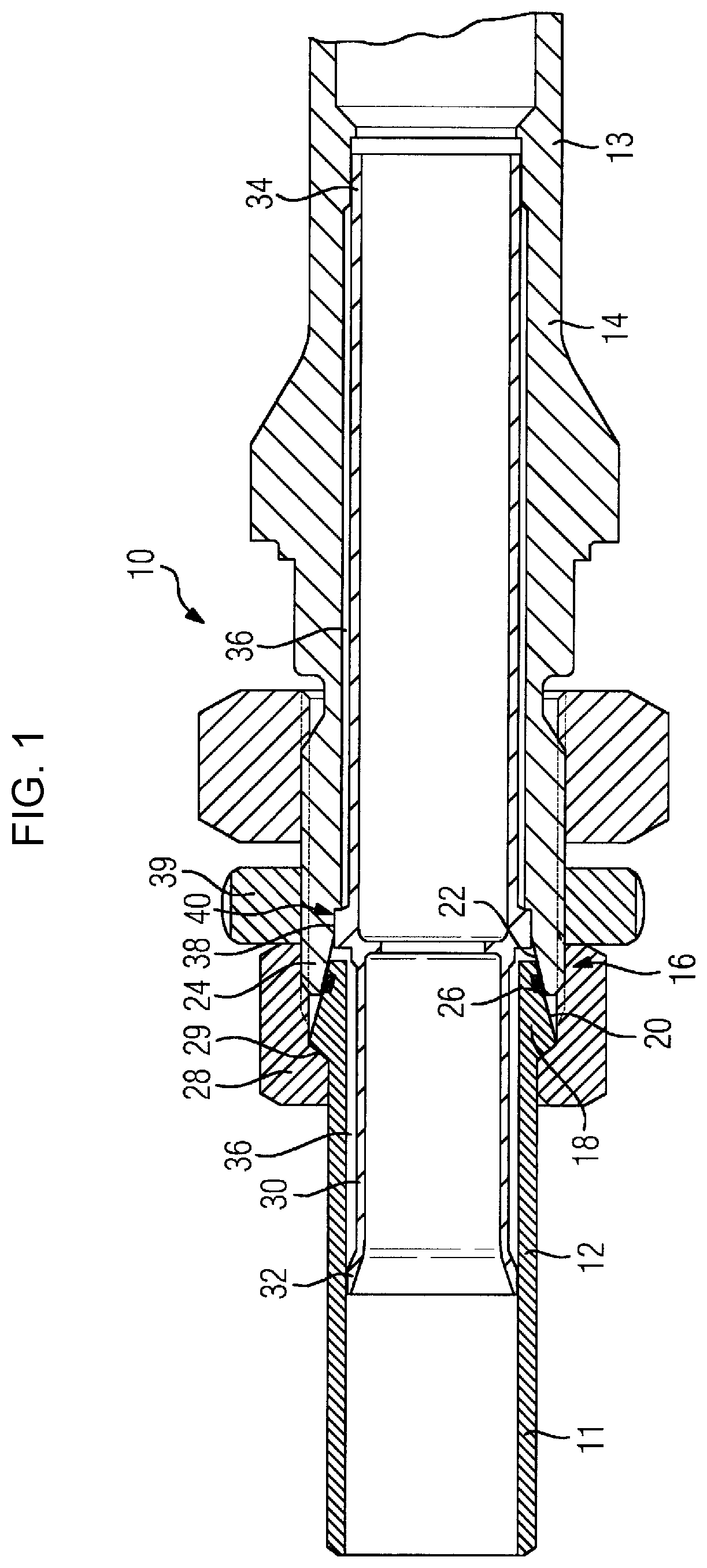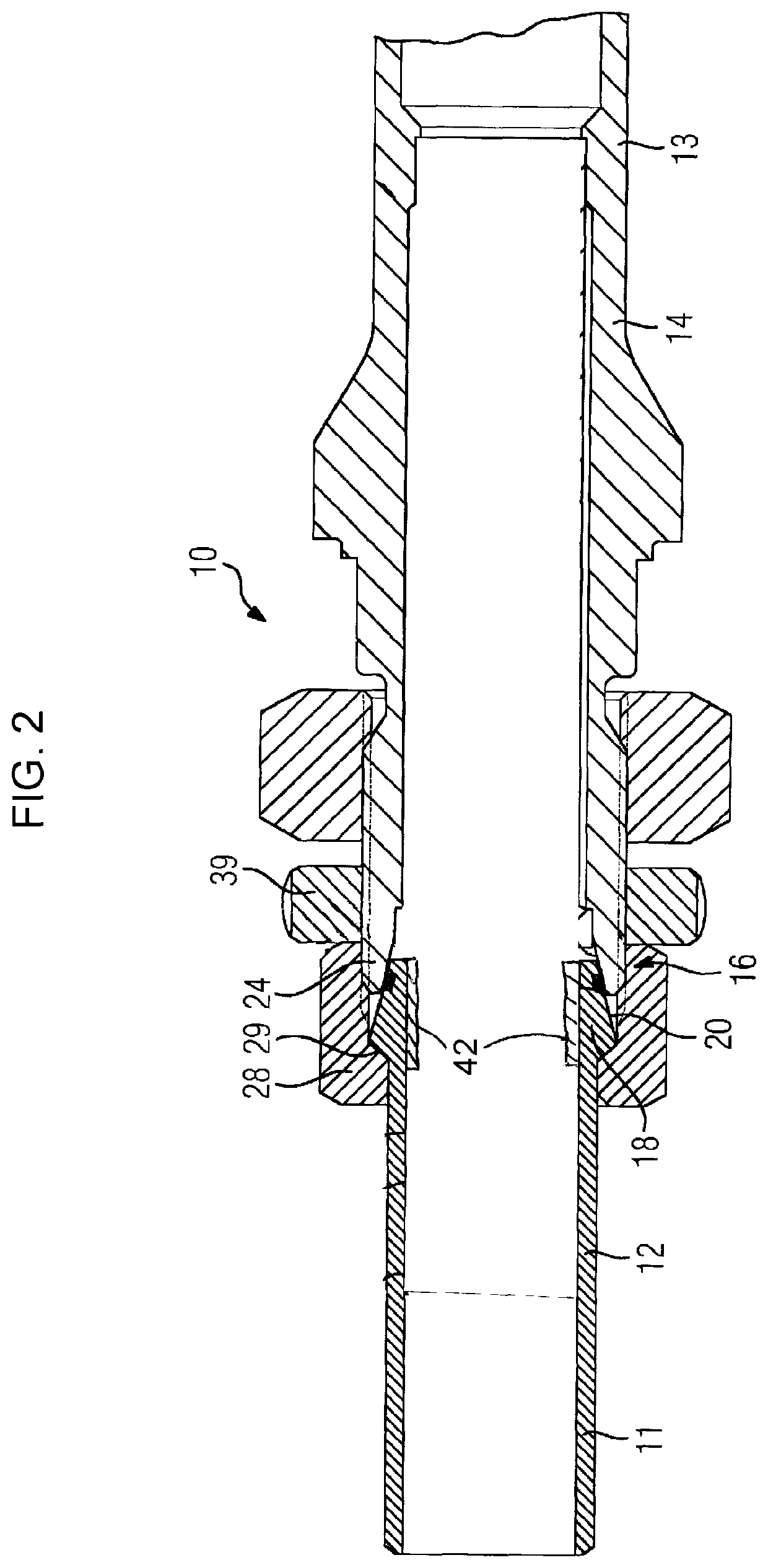Pipe connection for conducting a fluid that is under pressure
a technology for conducting fluids and pipes, applied in the direction of pipe joints, sleeves/socket joints, pipe protection, etc., can solve the problems of reducing the cone of the inner sealing face shrinks faster than the cone of the outer sealing face, etc., and achieves the effect of increasing the breakaway torque of the union nu
- Summary
- Abstract
- Description
- Claims
- Application Information
AI Technical Summary
Benefits of technology
Problems solved by technology
Method used
Image
Examples
Embodiment Construction
[0020]FIG. 1 shows, in longitudinal section, a pipe connection 10 for conducting a fluid that is under pressure. In that context, the pipe connection 10 comprises two connection pieces 12, 14 which are connected for a cone clamping connection 16. To that end, the first connection piece 12 has a cone 18 with an outward-oriented conical sealing face 20. The second connection piece 14 has, at an inclination which corresponds to the sealing face 20, an also conical sealing face 22, as part of a cone 24. The cone 24 forms the outer cone and the cone 18 forms the inner cone of the cone clamping connection.
[0021]In the sealing face 20 there is provided an endless circumferential annular groove 26 for receiving graphite as sealant. The two connection pieces 12, 14 are connected to one another with the aid of a union nut 28. Specifically, to that end, the union nut 28 is screwed onto the second connection piece 14, wherein the union nut 28 presses a conical shaft collar 29, a rearward part o...
PUM
 Login to View More
Login to View More Abstract
Description
Claims
Application Information
 Login to View More
Login to View More - R&D
- Intellectual Property
- Life Sciences
- Materials
- Tech Scout
- Unparalleled Data Quality
- Higher Quality Content
- 60% Fewer Hallucinations
Browse by: Latest US Patents, China's latest patents, Technical Efficacy Thesaurus, Application Domain, Technology Topic, Popular Technical Reports.
© 2025 PatSnap. All rights reserved.Legal|Privacy policy|Modern Slavery Act Transparency Statement|Sitemap|About US| Contact US: help@patsnap.com


